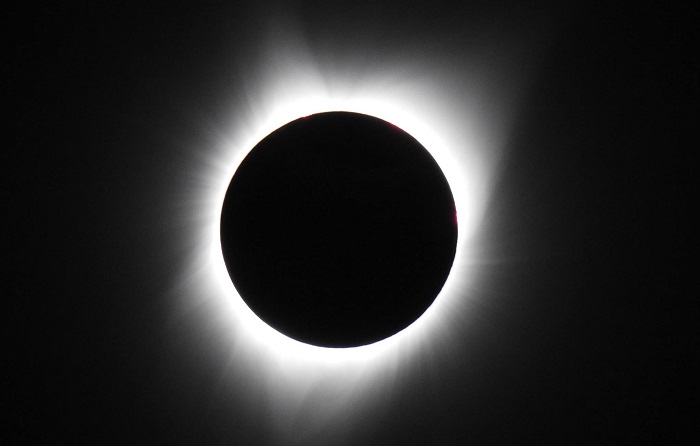使用Player FM应用程序离线!
The 2017 Bee-Clipse
Manage episode 229729616 series 6834

BOB HIRSHON (host):
Buzzing about the eclipse. I’m Bob Hirshon and this is Science Update.
The total solar eclipse of August 21, 2017 captivated people across North America, including 5th graders living in the path of totality. The young citizen scientists investigated what bees do when the sun disappears behind the moon. University of Missouri researchers Candi Galen and Zack Miller helped them deploy tiny microphones to record the buzzing of bees in flight before, during, and after the eclipse. Galen says instead of gradually ramping down their buzzing as darkness fell, the bees kept flying. But as soon as totality hit, they stopped.
CANDI GALEN (University of Missouri):
At that time, the buzzing ceased, which meant that there were no bee flights. That surprised us.
HIRSHON:
They write in the Annals of the Entomological Society of America that the students continued to learn from their data for months afterwards. Catch the next total solar eclipse on April 8, 2024. I’m Bob Hirshon, for AAAS, the science society.
Story by Susanne Bard
The post The 2017 Bee-Clipse appeared first on Science Update.
668集单集
Manage episode 229729616 series 6834

BOB HIRSHON (host):
Buzzing about the eclipse. I’m Bob Hirshon and this is Science Update.
The total solar eclipse of August 21, 2017 captivated people across North America, including 5th graders living in the path of totality. The young citizen scientists investigated what bees do when the sun disappears behind the moon. University of Missouri researchers Candi Galen and Zack Miller helped them deploy tiny microphones to record the buzzing of bees in flight before, during, and after the eclipse. Galen says instead of gradually ramping down their buzzing as darkness fell, the bees kept flying. But as soon as totality hit, they stopped.
CANDI GALEN (University of Missouri):
At that time, the buzzing ceased, which meant that there were no bee flights. That surprised us.
HIRSHON:
They write in the Annals of the Entomological Society of America that the students continued to learn from their data for months afterwards. Catch the next total solar eclipse on April 8, 2024. I’m Bob Hirshon, for AAAS, the science society.
Story by Susanne Bard
The post The 2017 Bee-Clipse appeared first on Science Update.
668集单集
所有剧集
×欢迎使用Player FM
Player FM正在网上搜索高质量的播客,以便您现在享受。它是最好的播客应用程序,适用于安卓、iPhone和网络。注册以跨设备同步订阅。




